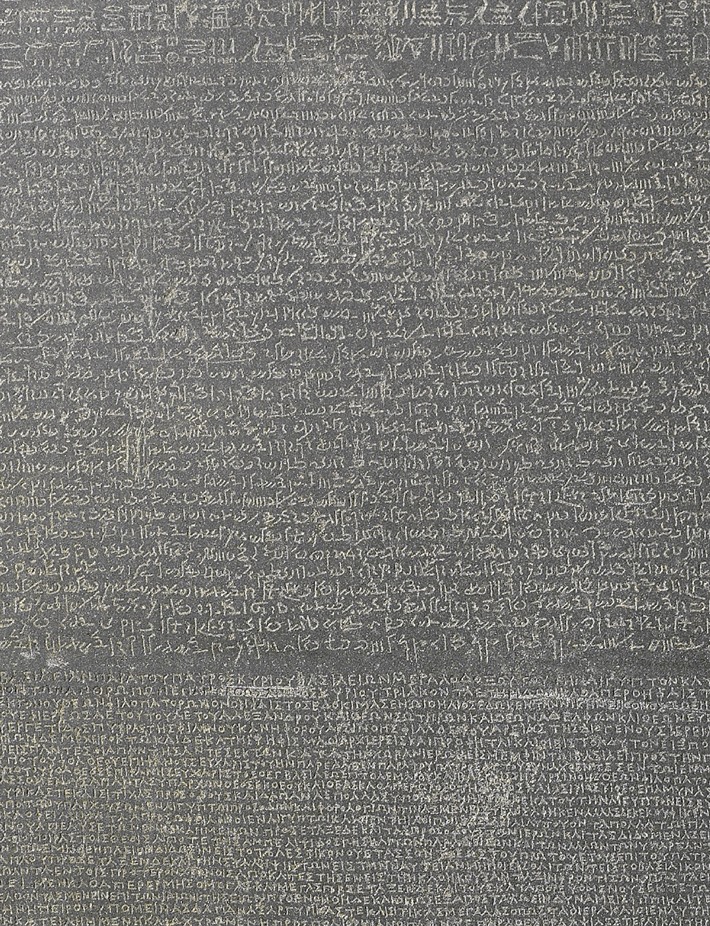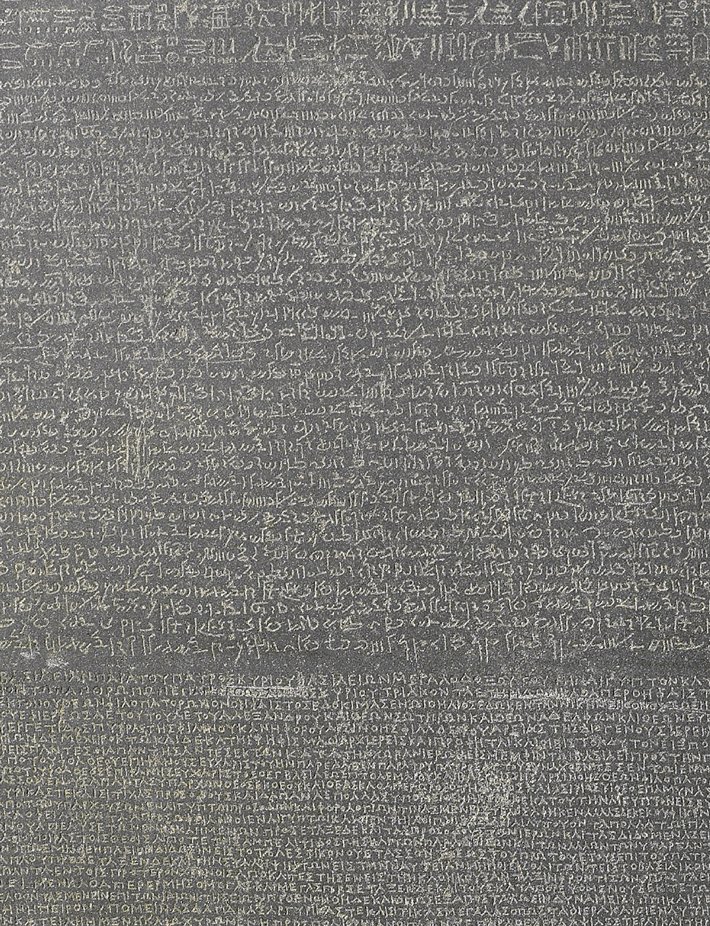Introduction
On this day (OTD) in 1799, a remarkable archaeological discovery was made that would forever change our understanding of the ancient world. In the Egyptian village of Rosetta, French Captain Pierre-François Bouchard stumbled upon a stone slab that would become known as the Rosetta Stone. This unassuming block of granodiorite held the key to deciphering the mysterious hieroglyphic writing system of ancient Egypt, a language that had remained undeciphered for centuries.
The Rosetta Stone’s importance lies not only in its role as the Rosetta stone (pun intended) for translating hieroglyphics, but also in the historical information it contained. Inscribed on the stone was a decree issued by the Egyptian pharaoh Ptolemy V, detailing his victory over insurgents during the Great Revolt that took place between 206 and 186 BC. This rich historical context, coupled with the ability to finally read the hieroglyphics, opened up a whole new world of understanding about ancient Egyptian civilization.
In this blog post, we’ll delve into the fascinating story of the Rosetta Stone’s discovery, the arduous process of translating its hieroglyphics, and the invaluable insights it has provided into the history and culture of ancient Egypt.
The Discovery of the Rosetta Stone
The Rosetta Stone was discovered on July 15, 1799, during Napoleon Bonaparte’s Egyptian Campaign. French Captain Pierre-François Bouchard was leading a group of soldiers near the town of Rosetta (modern-day Rashid) when they stumbled upon a curious stone slab that had been unearthed by the local villagers.
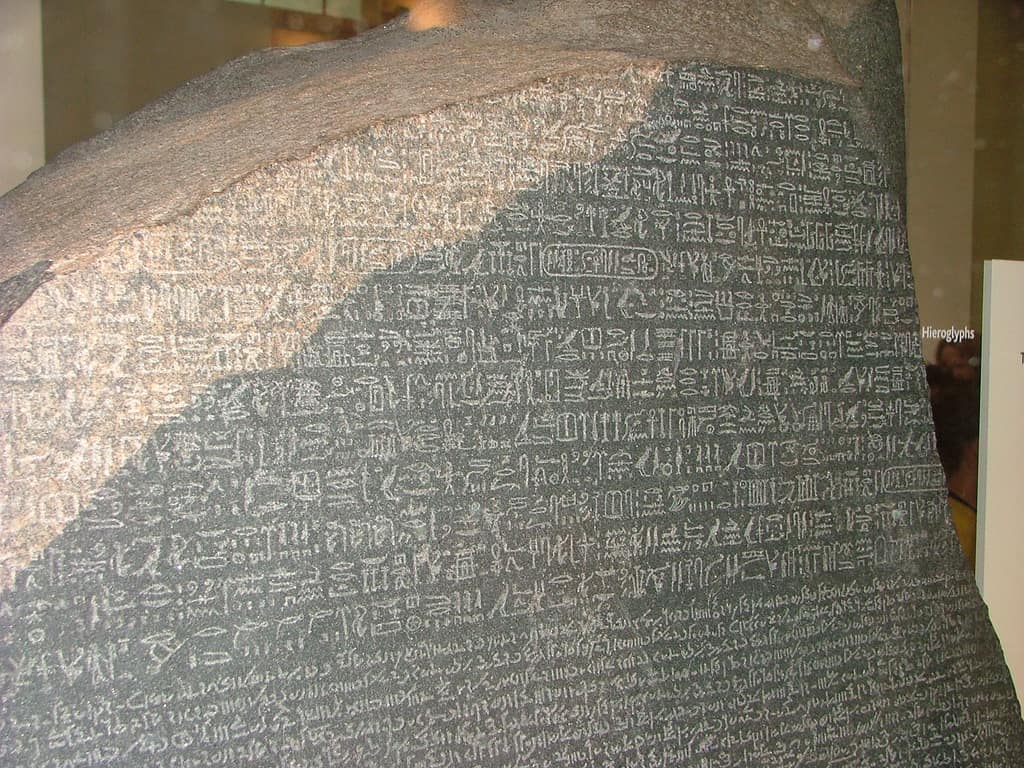
The stone was approximately 114 cm (45 inches) long, 72 cm (28 inches) wide, and 28 cm (11 inches) thick, and it was inscribed with three different scripts: ancient Greek, demotic (a cursive form of ancient Egyptian script), and ancient Egyptian hieroglyphics. This discovery was a momentous one, as it provided a key to unlocking the long-lost language of hieroglyphics.
At the time, the ability to read and understand hieroglyphics had been lost for centuries, and scholars were largely unable to decipher the ancient Egyptian writing system. The Rosetta Stone, with its parallel inscriptions in Greek, demotic, and hieroglyphics, offered a unique opportunity to compare the different scripts and potentially crack the code of hieroglyphics.
Efforts to Translate the Rosetta Stone
After the initial discovery, the Rosetta Stone was taken to Cairo, where it was studied by a team of French scholars and linguists. Among them was the renowned linguist and Egyptologist Jean-François Champollion, who would eventually become the first person to successfully translate the hieroglyphic inscriptions on the stone.
Champollion’s work was not without its challenges. The hieroglyphic script was vastly different from the alphabetic scripts he was familiar with, and it contained a complex system of pictographic and ideographic symbols that represented both sounds and concepts. Additionally, the inscription on the Rosetta Stone was not a complete text, but rather a royal decree issued by Ptolemy V, which made the translation process even more complex.
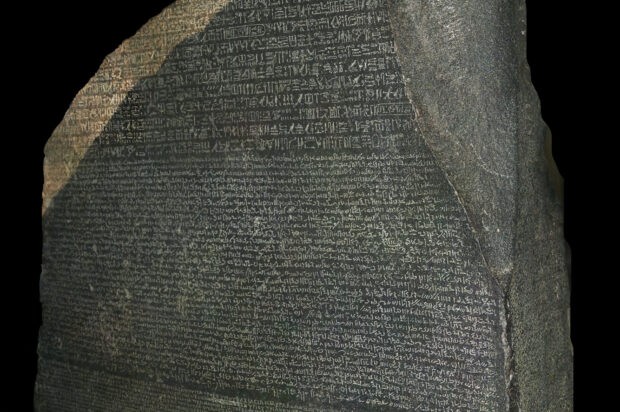
Champollion’s breakthrough came in 1822, when he realized that the hieroglyphic script contained both phonetic and ideographic elements. By carefully analyzing the cartouches (oval-shaped symbols) that contained the names of the Egyptian rulers, Champollion was able to identify the phonetic values of certain hieroglyphic signs. This allowed him to begin piecing together the meaning of the hieroglyphic inscriptions on the Rosetta Stone.
Over the next few years, Champollion continued to refine his understanding of the hieroglyphic script, drawing on his knowledge of Coptic, the last stage of the ancient Egyptian language. By 1824, he had published his groundbreaking work, “Précis du système hiéroglyphique des anciens Égyptiens,” which laid out his comprehensive system for translating hieroglyphics.
The Historical Context of the Rosetta Stone
The Rosetta Stone’s inscriptions not only provided the key to deciphering hieroglyphics, but they also offered valuable insights into the historical events and political dynamics of ancient Egypt. The text on the stone is a decree issued by Ptolemy V, the fifth ruler of the Ptolemaic dynasty that ruled Egypt from 323 to 30 BC.
The decree was issued in 196 BC, during a turbulent period in Egyptian history known as the Great Revolt. This uprising was a series of rebellions and civil wars that erupted in various parts of Egypt, challenging the authority of the Ptolemaic dynasty. The text on the Rosetta Stone describes Ptolemy V’s victory over the insurgents, and it details the various honors and privileges bestowed upon the king by the Egyptian priesthood.
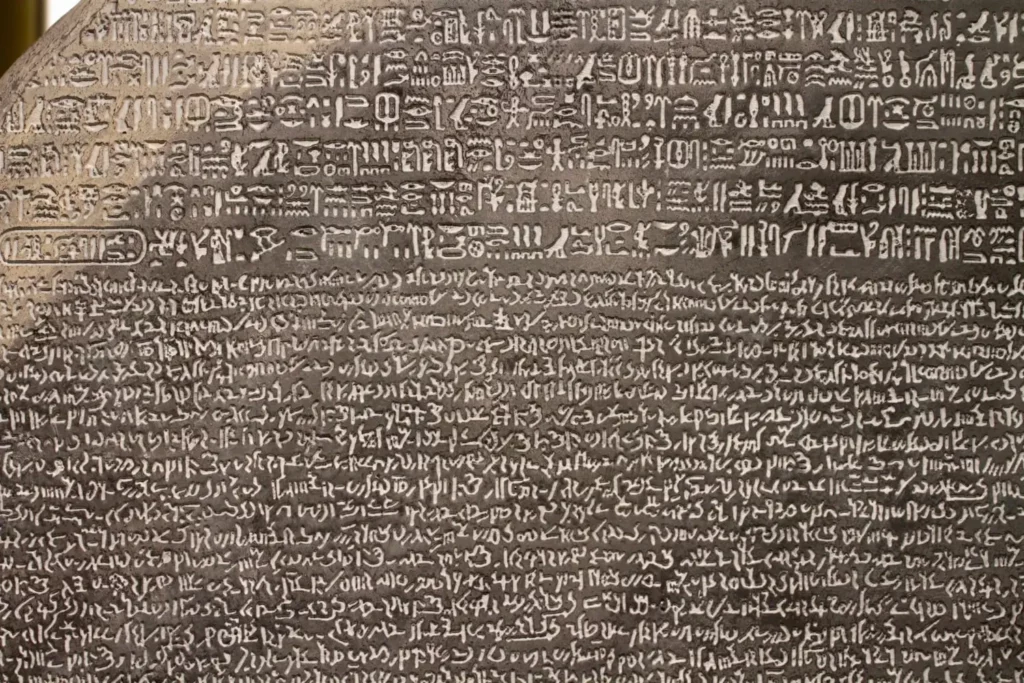
The historical context provided by the Rosetta Stone’s inscription has been invaluable for scholars studying the Ptolemaic period and the political and social dynamics of ancient Egypt during that time. The decree sheds light on the relationship between the Ptolemaic rulers and the Egyptian priesthood, as well as the complex political and military challenges faced by the dynasty.
Moreover, the Rosetta Stone’s inscription provides a rare glimpse into the administrative and bureaucratic practices of ancient Egypt. The text includes details about the distribution of land, the collection of taxes, and the organization of religious festivals – all of which offer valuable insights into the inner workings of the Ptolemaic state.
The Significance of the Rosetta Stone
The discovery and translation of the Rosetta Stone marked a turning point in the study of ancient Egyptian civilization. Prior to this, scholars had been largely unable to decipher the hieroglyphic script, which had remained a mystery for centuries. The Rosetta Stone’s parallel inscriptions in Greek, demotic, and hieroglyphics provided the key to unlocking this ancient language, opening up a new world of understanding about the history, culture, and beliefs of the ancient Egyptians.
The impact of the Rosetta Stone’s translation cannot be overstated. It allowed scholars to access a wealth of previously inaccessible information, including religious texts, historical records, and artistic works. This, in turn, has led to a much deeper and more nuanced understanding of ancient Egyptian civilization, from its political and social structures to its religious beliefs and cultural practices.

Moreover, the Rosetta Stone’s significance extends beyond the field of Egyptology. The successful translation of the hieroglyphic script was a landmark achievement in the history of linguistics and archaeology, demonstrating the power of comparative analysis and the potential for unlocking the secrets of long-lost languages and civilizations.
Today, the Rosetta Stone remains one of the most famous and important archaeological artifacts in the world. It is housed in the British Museum in London, where it continues to captivate and inspire scholars, students, and the general public alike. The stone’s enduring legacy serves as a testament to the transformative power of knowledge and the enduring human desire to unravel the mysteries of the past.
Conclusion
The discovery of the Rosetta Stone in 1799 was a momentous event that forever changed our understanding of ancient Egyptian civilization. This unassuming stone slab, with its parallel inscriptions in Greek, demotic, and hieroglyphics, provided the key to deciphering the long-lost language of hieroglyphics, opening up a wealth of historical, cultural, and religious information about the ancient Egyptians.
The painstaking efforts of scholars like Jean-François Champollion to translate the Rosetta Stone’s inscriptions were ultimately rewarded with a profound breakthrough in our understanding of the ancient world. The historical context revealed by the stone’s decree issued by Ptolemy V has shed light on the political and social dynamics of the Ptolemaic period, while the insights into the administrative and religious practices of ancient Egypt have been invaluable for scholars.
Today, the Rosetta Stone remains one of the most significant and iconic archaeological artifacts in the world, a testament to the power of knowledge and the enduring human desire to unravel the mysteries of the past. Its discovery and translation have had a lasting impact on the field of Egyptology and the broader study of ancient civilizations, and it continues to captivate and inspire scholars, students, and the general public alike.

